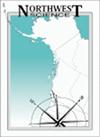Factors Affecting Angling Fight and Air Exposure Times for Yellow Perch, Smallmouth Bass, and Crappie in Lentic Fisheries
IF 0.5
4区 环境科学与生态学
Q4 ECOLOGY
引用次数: 2
Abstract
Abstract The effects of catch-and-release related fight and air exposure times on post-release stress response or mortality of fishes has repeatedly been investigated, but rarely have anglers been observed to determine fight and air exposure times to which caught-and-released fish are actually exposed. We observed anglers land and either harvest or release yellow perch (Perca flavescens), smallmouth bass (Micropterus dolomieu), white crappie (Pomoxis annularis), and black crappie (P. nigromaculatus) to evaluate associated fight time and air exposure time. A total of 237 fight and 312 air exposure times were recorded; mean fight time was 10.1 s (range 1 to 40 s), mean air exposure of released fish was 20.1 s (range 2 to 141 s), and 95% of anglers subjected fish to < 24 s of fight time and < 51 s of air exposure. Landing crappie required less time (X̄ = 8.5 s) than landing yellow perch (X̄ = 12.8 s) or smallmouth bass (X̄ = 12.9 s). Air exposure was longer for yellow perch (X̄ = 28.1 s) and smallmouth bass (X̄ = 25.9 s) than for crappie (X̄ = 14.9 s), and small fish were subjected to less air (X̄ = 17.6 s) than larger fish (X̄ = 28.5 s). Results of the present study suggest that air exposure and fight times for warm-water and cool-water fish released by Idaho anglers are relatively short and therefore appear to be biologically inconsequential. Further work is needed to support or refute these findings for actual anglers across a larger geographic area.影响黄鲈、小嘴鲈鱼和鲷鱼钓鱼斗争和暴露时间的因素
摘要与捕获和释放相关的打斗和空气暴露时间对鱼类释放后应激反应或死亡率的影响已经被反复研究,但很少观察到垂钓者来确定捕获和释放的鱼类实际暴露在打斗和空气中的时间。我们观察了垂钓者降落并收获或放生黄色鲈鱼(Perca flavescens)、小口鲈鱼(Micropterus dolomieu)、白色克拉皮(Pomoxis annularis)和黑色克拉皮(P.nigromaculatus),以评估相关的战斗时间和空气暴露时间。共记录了237次打斗和312次暴露在空气中的次数;平均战斗时间为10.1s(范围1至40s),放生鱼的平均空气暴露时间为20.1s(范围2至141s),95%的垂钓者使鱼的战斗时间<24s,空气暴露时间<51s。与降落黄鲈鱼(X̄=12.8 s)或小嘴鲈鱼(X=12.9 s)相比,克拉皮鱼降落所需时间(X̃=8.5 s)更短。黄鲈鱼(X̄=28.1 s)和小口鲈鱼(X=25.9 s)的空气暴露时间比克拉皮鱼(X̃=14.9 s)长,并且小型鱼类比大型鱼类(Ẋ=28.5 s)暴露的空气更少(X̊=17.6 s)。目前的研究结果表明,爱达荷州垂钓者释放的温水和冷水鱼暴露在空气中的时间和打斗时间相对较短,因此在生物学上似乎无关紧要。对于更大地理区域的实际垂钓者来说,还需要进一步的工作来支持或反驳这些发现。
本文章由计算机程序翻译,如有差异,请以英文原文为准。
求助全文
约1分钟内获得全文
求助全文
来源期刊

Northwest Science
环境科学-生态学
CiteScore
1.30
自引率
0.00%
发文量
23
审稿时长
>36 weeks
期刊介绍:
The pages of Northwest Science are open to original and fundamental research in the basic, applied, and social sciences. All submissions are refereed by at least two qualified peer reviewers. Papers are welcome from authors outside of the Pacific Northwest if the topic is suitable to our regional audience.
 求助内容:
求助内容: 应助结果提醒方式:
应助结果提醒方式:


